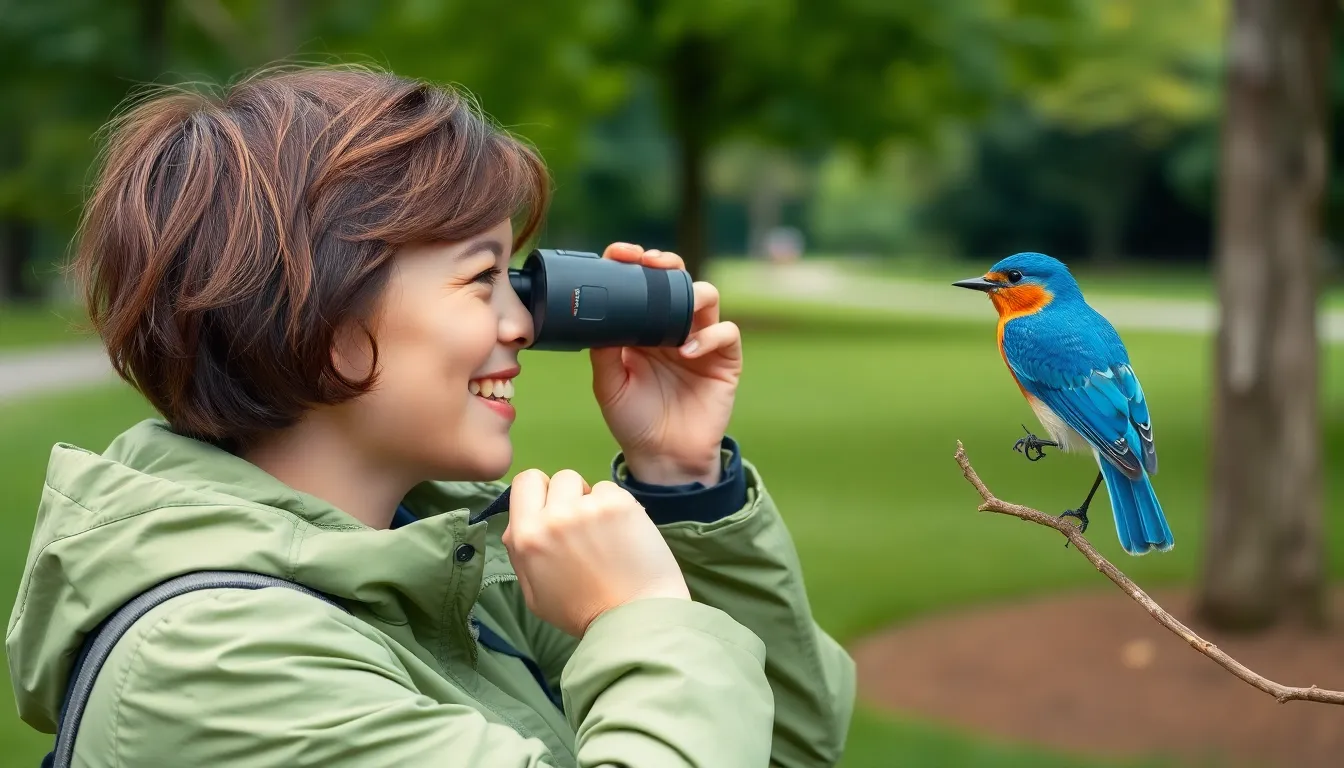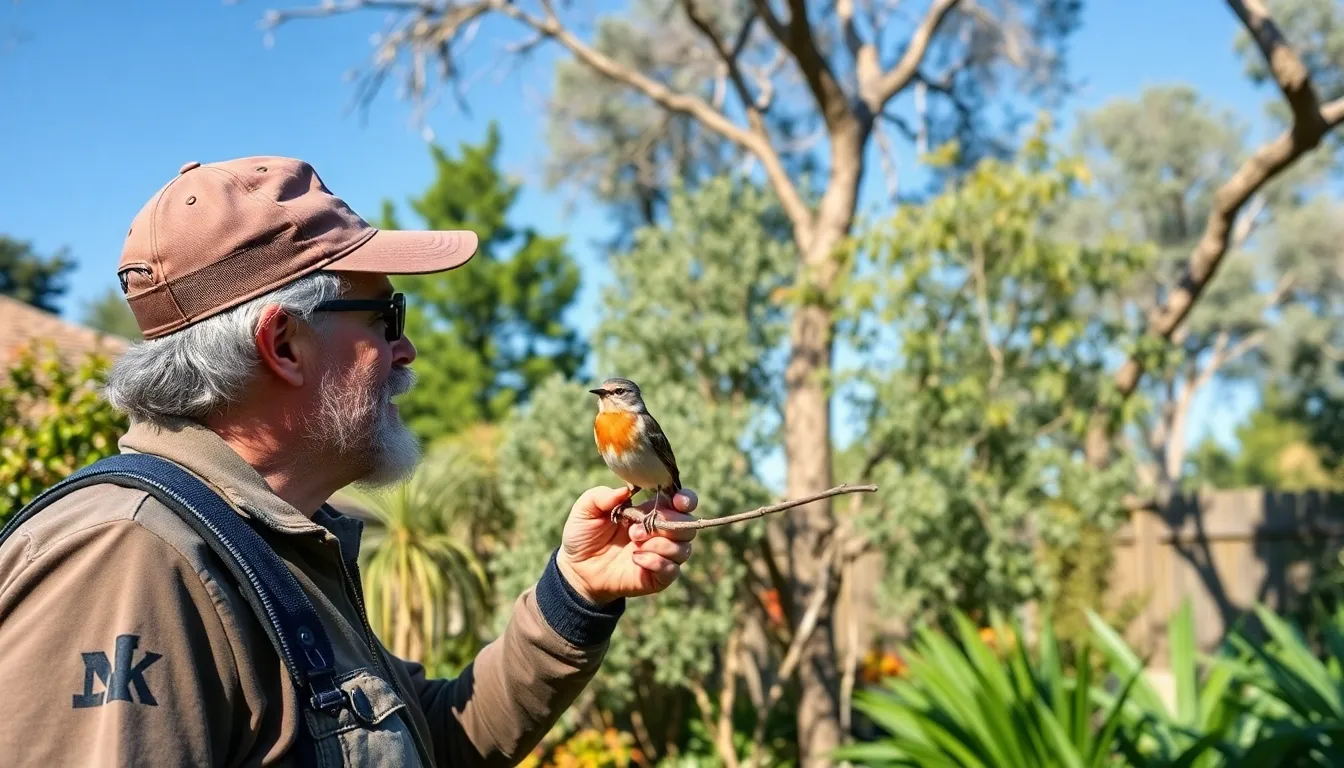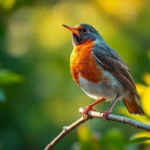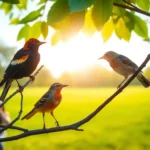Bird watching has captivated millions of nature enthusiasts worldwide and we’re here to help you discover the perfect companion for your ornithological adventures. Whether you’re a curious beginner spotting your first cardinal or an experienced birder tracking rare migrants, choosing the right bird book can transform your outdoor experiences from casual observation to meaningful discovery.
We’ve spent countless hours researching and testing various field guides to bring you comprehensive insights into what makes a bird book truly exceptional. From detailed illustrations and range maps to behavioral descriptions and identification tips, the right guide becomes your trusted partner in the field.
The industry of bird books offers incredible variety but finding one that matches your exact needs and skill level can feel overwhelming. We’ll walk you through everything you need to know to make an well-informed choice that’ll enhance your birding journey for years to come.
Essential Field Guides Every Bird Watcher Needs
We’ve compiled the top field guides that consistently deliver accurate identification help and comprehensive coverage for birders across all skill levels.
Peterson Field Guide to Birds of North America
Peterson’s legendary system revolutionized bird identification when it first appeared in 1934. We love how this guide uses distinctive field marks with arrows pointing to key identification features that separate similar species. The artwork presents birds in classic poses that birders actually see in the field rather than museum specimens.
Roger Tory Peterson’s visual approach makes complex bird identification accessible to beginners while remaining valuable for experienced watchers. We find the range maps particularly useful since they show seasonal distributions and help narrow down possibilities by geographic location. The compact size fits perfectly in backpacks and field vests without adding excessive weight during long hiking expeditions.
National Geographic Field Guide to the Birds of North America
National Geographic combines stunning photography with detailed illustrations to create one of the most visually appealing field guides available. We appreciate how this guide includes both juvenile and adult plumages for most species since many birders struggle with identifying immature birds in the field.
The book covers over 1,000 species with precise range maps that show breeding, wintering, and year round territories. We particularly value the sonogram displays that accompany bird call descriptions, helping birders identify species by sound when visual confirmation proves difficult. The sturdy binding withstands frequent field use while the high quality paper resists moisture damage during outdoor adventures.
Sibley Guide to Birds
David Sibley’s comprehensive work stands out for its scientific accuracy and artistic excellence in bird illustration. We consider this the most detailed field guide available, featuring multiple poses and plumage variations for each species that other guides often omit.
The guide includes seasonal variations, flight patterns, and behavioral notes that enhance field identification beyond simple physical characteristics. We find Sibley’s attention to subspecies particularly valuable for advanced birders working in regions where geographic variations occur. The larger format allows for more detailed illustrations while still remaining portable enough for serious field work.
Best Bird Books for Beginner Birdwatchers

Starting your birding journey requires books that make complex ornithology accessible and captivating. We’ve selected three outstanding beginner resources that complement the comprehensive field guides mentioned earlier.
All About Birds: A Short Illustrated History
All About Birds: A Short Illustrated History serves as the perfect introduction to understanding our feathered friends. Cornell Lab of Ornithology created this beautifully crafted book that covers bird evolution, anatomy, behavior, and conservation in digestible chapters. Beginners appreciate its clear explanations of how flight works, why birds migrate thousands of miles, and what makes each species unique.
Visual learners benefit from the book’s stunning illustrations and diagrams that explain complex concepts like molt patterns and territorial behaviors. We find this resource particularly valuable because it builds foundational knowledge that makes field identification much easier. New birders often struggle with understanding bird families and relationships, but this book provides that crucial context through captivating storytelling and scientific accuracy.
The Young Birder’s Guide to Birds of Eastern North America
The Young Birder’s Guide to Birds of Eastern North America transforms bird identification into an adventure for new watchers. Author Bill Thompson III designed this guide specifically for beginners, featuring 300 common eastern species with simplified identification tips and range maps. Each species account includes “Look For” sections that highlight the most distinctive features, making quick field identification possible even for novices.
Interactive elements throughout the book engage readers with birding activities, seasonal checklists, and habitat guides. We recommend this book because it focuses on the most commonly seen birds rather than overwhelming beginners with rare species they’re unlikely to encounter. Photography replaces complex illustrations, showing birds in natural poses that match what you’ll actually see in the field.
Regional specificity makes this guide incredibly practical for eastern North America birders, covering species from backyard feeders to local parks and nature preserves.
Bird Sense: What It’s Like to Be a Bird
Bird Sense: What It’s Like to Be a Bird opens beginners’ minds to the incredible sensory industry of avian life. Author Tim Birkhead explores how birds see ultraviolet patterns invisible to humans, navigate using magnetic fields, and communicate through complex vocalizations. This scientific yet accessible book helps new birders understand behaviors they observe in the field.
Understanding bird senses transforms casual observation into meaningful wildlife watching. We’ve found that beginners who read this book become more observant and patient, recognizing that apparent “random” bird behaviors actually serve exact purposes. Chapters covering bird vision explain why some species can spot tiny insects from great distances, while sections on hearing reveal how birds distinguish individual calls in noisy environments.
Scientific research throughout the book comes from leading ornithologists and recent studies, giving readers current knowledge about avian capabilities. New birders gain appreciation for the complexity of bird life, making every sighting more meaningful and inspiring continued learning.
Advanced Bird Book Resources for Serious Ornithologists

Professional ornithologists and dedicated researchers require comprehensive references that go beyond standard field guides. These specialized resources offer scientific rigor and exhaustive detail for advanced study and identification.
The Birds of North America Online
The Birds of North America Online delivers peer-reviewed species accounts written by leading ornithologists and researchers. Each account provides extensive coverage of breeding biology, behavior, distribution patterns, and conservation status based on current scientific literature. We find this digital platform particularly valuable for its regular updates that incorporate the latest taxonomic changes and research findings.
Species accounts include detailed life history information that covers everything from nesting habits to migration patterns. Researchers use these comprehensive profiles to understand population dynamics, habitat requirements, and ecological relationships within bird communities. The platform’s advanced search functionality allows users to filter by geographic region, taxonomic group, or exact behavioral characteristics.
Professional birders appreciate the integration of eBird data that provides real-time occurrence patterns and frequency maps. The resource includes high-quality sound recordings and range maps that reflect current distribution data rather than outdated historical records.
Handbook of the Birds of the Industry
Handbook of the Birds of the Industry represents the most comprehensive ornithological reference ever published, covering all 10,000+ bird species worldwide across 17 volumes. Each family account begins with detailed essays on evolution, morphology, ecology, and conservation written by international experts in their respective fields. We consider this series essential for understanding global avian diversity and taxonomic relationships.
Volume organization follows phylogenetic order based on the most current systematic research and DNA analysis. Detailed species accounts include measurements, voice descriptions, habitat preferences, and breeding information supported by extensive bibliographies. The accompanying distribution maps show breeding ranges, wintering areas, and migration routes with remarkable precision.
Illustrations throughout the series feature original artwork that depicts multiple plumages, flight patterns, and behavioral postures for each species. Conservation status assessments reflect current IUCN Red List categories and provide detailed analysis of threats facing each taxon. Digital access through the HBW Alive portal allows searching across all volumes and includes video content and additional sound recordings.
The Crossley ID Guide Series
The Crossley ID Guide Series revolutionizes bird identification through innovative photographic composites that show species in various poses and lighting conditions. Richard Crossley’s approach combines multiple photographs into single plates that demonstrate size relationships, flight patterns, and behavioral differences more effectively than traditional field guide layouts. We find these guides particularly useful for understanding how birds appear under real field conditions.
Each plate contains dozens of carefully selected images that show seasonal variations, age differences, and subspecies characteristics within naturalistic habitat settings. The guides focus on commonly confused species groups and provide comparison pages that highlight key distinguishing features between similar birds. Advanced birders appreciate the inclusion of rare morphs, hybrids, and subspecies that other guides often omit.
Geographic coverage includes specialized volumes for Britain and Ireland, Eastern Birds, Western Birds, and Raptors, with each edition customized to regional identification challenges. The series emphasizes problem solving approaches that help birders develop pattern recognition skills rather than relying solely on field marks. Sound advice sections address common identification pitfalls and provide strategies for aging and sexing difficult species groups.
Regional Bird Books for Local Species Identification

Targeting your exact geographic area dramatically improves bird identification accuracy and enhances your local birding experience. We’ve discovered that regional guides focus on species you’ll actually encounter in your backyard and nearby habitats.
State-Exact Bird Guides
California birders rely on “Birds of California” by Ted Beedy and Stephen Granholm, which covers all 676 species documented in the Golden State. This comprehensive guide includes detailed range maps showing seasonal distributions across California’s diverse ecosystems from coastal redwoods to desert valleys. We appreciate how it highlights endemic species like the California Towhee and Island Scrub-Jay that you won’t find elsewhere.
Texas offers “A Field Guide to Birds of the Big Bend” by Roland Wauer, perfect for exploring this biodiversity hotspot where 450 species have been recorded. The guide emphasizes Mexican species that cross into Texas, including specialties like the Colima Warbler and Lucifer Hummingbird. We find its habitat descriptions particularly valuable for locating target species in exact park areas.
Florida watchers turn to “A Field Guide to the Birds of Florida” by Bill Pranty, covering 525 species across the state’s unique wetland and coastal environments. This guide excels at distinguishing between similar wading birds and shorebirds that challenge even experienced birders. We recommend it for identifying winter residents and year-round subtropical species found nowhere else in North America.
New York birders benefit from “Birds of New York State” by John Bull and John Farrand Jr., documenting over 470 species across diverse habitats from Adirondack peaks to Long Island shores. The book includes detailed migration timing charts that help predict when to find exact warblers and other passage migrants. We value its urban birding sections for Central Park and other city hotspots.
Habitat-Focused Bird Books
Wetland specialists should acquire “A Guide to Bird Finding in Wetlands” by William Zimmerman, covering over 200 marsh, pond, and shoreline species across North America. This guide organizes birds by water depth preferences and feeding behaviors, making identification more intuitive during field observations. We find its seasonal timing charts essential for planning visits to prime wetland locations.
Forest birding enthusiasts need “Forest Birds of North America” by Chris Earley, featuring 180 woodland species with detailed habitat preferences from boreal forests to temperate deciduous woods. The guide emphasizes behavioral clues and vocalizations that help locate birds in dense canopy conditions. We appreciate its focus on elevation preferences and forest succession stages that determine species composition.
Grassland habitats require specialized knowledge found in “Birds of North American Grasslands” by Stephen Davis, covering 95 prairie and plains species across the continent’s interior. This guide addresses the challenge of identifying small brown birds in open country through flight patterns and song characteristics. We recommend it for understanding how grazing patterns and fire management affect bird communities.
Desert environments present unique identification challenges addressed in “Desert Birds of the Southwest” by Richard Cachor Taylor, featuring 120 species adapted to arid conditions. The guide emphasizes water source dependencies and seasonal movement patterns that concentrate birds in predictable locations. We find its coverage of cactus and riparian specialists particularly valuable for Arizona and New Mexico birding.
Migration Route Guidebooks
Atlantic Flyway coverage reaches its peak in “Birds of the Atlantic Flyway” by Paul Kerlinger, documenting migration patterns for over 300 species along the eastern seaboard. This guide includes timing charts for major stopover sites from Nova Scotia to Florida, with exact attention to hawk migration routes and shorebird staging areas. We use its weather pattern analysis to predict optimal birding days during spring and fall passages.
Mississippi Flyway birders depend on “Following the Mississippi Flyway” by Janssen and Barber, covering the central migration corridor used by 40% of North American waterfowl and shorebirds. The guide highlights 200 key stopover sites along the river system and Great Lakes region. We appreciate its focus on flood timing and water level management that affects bird concentrations.
Pacific Flyway migrations come alive in “Pacific Flyway Bird Migration” by Dennis Paulson, featuring routes from Alaska to Patagonia with emphasis on western North American species. This comprehensive guide covers 250 species that use Pacific coast and inland mountain corridors during their journeys. We find its coverage of high elevation passes and desert oases essential for understanding western migration patterns.
Central Flyway receives thorough treatment in “Birds of the Central Flyway” by Paul Johnsgard, documenting migration through the Great Plains corridor from Canada to Mexico. The guide emphasizes grassland species and prairie grouse that many general guides overlook. We value its agricultural industry focus and timing information for finding rarities during weather-related fallouts.
Digital Bird Books and Mobile Apps

Modern technology transforms how we access bird identification resources and field guides. Digital platforms offer real-time updates and interactive features that traditional books can’t match.
eBird Mobile Applications
eBird serves as the industry’s largest citizen science project for bird observation data collection. We can contribute our sightings directly from the field while accessing a comprehensive database of regional bird reports. The mobile app connects us with over 700 million bird observations from birders worldwide, creating an invaluable resource for understanding species distribution patterns.
Real-time data updates show us which birds other observers spotted in our area during recent days. Location-based features help us discover nearby birding hotspots and rare bird alerts. The app’s personal birding statistics track our year lists, life lists, and observation history across multiple locations.
Seasonal abundance charts display when exact species appear most frequently in our region. We can explore detailed range maps that show breeding territories, migration patterns, and wintering grounds. The platform integrates seamlessly with other Cornell Lab tools, improving our overall birding experience.
Merlin Bird ID App Features
Merlin Bird ID revolutionizes field identification through artificial intelligence and machine learning technology. We can identify birds using four different methods: photo identification, sound recognition, descriptive questions, and location-based suggestions.
Photo identification analyzes our bird images and provides instant species suggestions with confidence ratings. The app’s sound identification feature recognizes bird calls and songs in real-time recordings. We answer simple questions about size, colors, and behavior to receive customized identification options.
Location-aware suggestions show us which birds we’re most likely to encounter based on our current position and date. The app includes over 6,000 species from around the industry with detailed photos, sounds, and range maps. Regular updates expand the database and improve identification accuracy.
Offline functionality ensures we can access critical identification tools even without internet connectivity. The app stores our bird lists locally and syncs with eBird when we return to network coverage. Custom sound packs allow us to download regional bird songs for enhanced field identification.
Interactive Digital Field Guides
Audubon Bird Guide combines stunning photography with comprehensive species information in a user-friendly digital format. We access detailed habitat descriptions, behavioral notes, and migration timing for over 800 North American species. The app includes range maps that update based on current season and climate data.
Interactive features allow us to compare similar species side by side with key identification markers highlighted. We can filter searches by location, season, habitat type, and physical characteristics. The guide includes photo galleries showing birds in various plumages and poses throughout the year.
Smart Lists generate personalized recommendations based on our location and the current date. We can create custom field notes and photo galleries for our favorite birding locations. The app connects with our eBird account to track which species we’ve already observed.
Regional editions focus on exact geographic areas with enhanced local content and expert insights. These digital guides include video clips showing flight patterns, feeding behaviors, and vocalizations. We receive regular content updates that reflect changing migration patterns and range expansions.
Children’s Bird Books That Inspire Young Naturalists

Getting children excited about birds requires books that combine education with captivating storytelling. We’ve selected bird books that capture young imaginations while building foundational knowledge about avian species and their behaviors.
Picture Books About Birds
Picture books serve as the perfect introduction to birds for children aged 3-7 years old. “About Birds: A Guide for Children” by Cathryn Sill features stunning watercolor illustrations and simple text that explains bird basics like feathers, nests, and migration patterns. Each page focuses on one key concept, making complex behaviors easy for young minds to grasp.
“Feathers: Not Just for Flying” by Melissa Stewart explores the many purposes of bird feathers through vibrant photographs and accessible explanations. Children discover how feathers help birds stay warm, attract mates, and communicate with each other. The book’s interactive elements encourage kids to observe feather details during outdoor adventures.
“The Great Migration” by National Geographic Kids transforms the incredible journey of migrating birds into an exciting visual story. Bold illustrations show various species traveling across continents, while simple maps help children understand flight paths and timing. We love how this book connects to the migration concepts discussed in field guides.
Educational Activity Bird Books
Activity books engage children through hands-on learning experiences that reinforce bird identification skills. “The Kids’ Guide to Birds” by Jonathan Alderfer combines field guide information with puzzles, games, and drawing activities that make learning memorable. Children practice identifying common backyard species while completing fun challenges.
“National Geographic Kids Birds Sticker Activity Book” features over 1,000 stickers and interactive pages where children match birds to their habitats. Kids learn about different ecosystems while placing woodland birds in forests and waterbirds near lakes. The sticker format appeals to tactile learners who benefit from physical interaction.
“Bird Bingo and Other Birding Games” by Christine Berrie includes multiple games that families can play during outdoor birding trips. Children use identification cards to spot species and mark their discoveries, turning nature walks into exciting competitions. We find these games particularly effective for maintaining kids’ attention during longer field experiences.
Junior Naturalist Field Guides
Simplified field guides bridge the gap between picture books and adult birding resources for children aged 8-12 years old. “National Geographic Kids Bird Guide of North America” presents 100 common species with colorful photographs and kid-friendly identification tips. Each entry includes fun facts about behavior and habitat preferences that connect to children’s everyday observations.
“Peterson Field Guide for Young Naturalists: Birds” adapts the classic Peterson identification system for younger users. Simple arrows point to key field marks while avoiding overwhelming technical details. The guide focuses on 120 species that children commonly encounter, building confidence through successful identifications.
“Backyard Birds of North America” by Jonathan Alderfer concentrates specifically on species found near homes and schools. Children learn to identify cardinals, robins, and blue jays through clear photographs and behavioral descriptions. We appreciate how this guide connects to species mentioned in beginner resources while remaining age appropriate for developing naturalists.
Specialty Bird Books by Behavior and Characteristics

Beyond general identification guides, specialty bird books focus on exact aspects of avian behavior and characteristics that enhance our understanding of bird life. These specialized resources dive deeper into the intriguing area of bird communication, nesting habits, and visual documentation.
Bird Song and Call Identification Guides
The Stokes Field Guide to Bird Songs transforms audio learning with its comprehensive collection of over 372 North American species’ vocalizations. We find this guide particularly valuable because it includes CDs with high-quality recordings organized by habitat, making field identification more efficient. Each species entry provides detailed descriptions of song patterns, call variations, and behavioral contexts for vocalizations.
Birds of North America: Audio Collection offers professional-grade recordings that capture the subtle differences between similar species. This resource excels at presenting seasonal variations in bird songs, including breeding calls, alarm notes, and juvenile begging sounds. Experienced birders appreciate the detailed liner notes that explain vocal behaviors and communication purposes.
Birdsong by the Seasons connects vocal patterns to exact times of year and breeding cycles. We recommend this guide for understanding how weather patterns influence bird communication and why certain species sing more actively during dawn and dusk hours. The book includes spectrograms that visually represent sound patterns for analytical learners.
Nest and Egg Identification Books
A Field Guide to Birds’ Nests by Hal Harrison provides comprehensive coverage of over 285 North American species’ nesting behaviors and structures. We value this guide’s detailed photographs showing nest construction materials, typical placement locations, and architectural variations within species. Each entry includes clutch sizes, incubation periods, and seasonal timing information.
Bird Eggs of Britain and Europe extends our knowledge beyond North America with detailed illustrations of egg colors, sizes, and markings. This specialized reference helps distinguish between closely related species through subtle differences in shell patterns and dimensions. Advanced birders use this guide for understanding genetic variations and geographic influences on egg characteristics.
The Nesting Season combines behavioral observations with practical nest monitoring techniques. We find this resource invaluable for understanding parental care patterns, fledgling development, and territory establishment behaviors. The book includes safety guidelines for observing nesting birds without causing disturbance.
Bird Photography and Art Books
The Art of Bird Photography teaches technical skills exact to capturing avian subjects in various lighting conditions and environments. We appreciate this guide’s coverage of equipment recommendations, camera settings for flight photography, and ethical guidelines for wildlife photography. Professional photographers share techniques for achieving sharp focus on fast-moving subjects.
Birds in Art showcases the evolution of avian representation across different artistic mediums and historical periods. This coffee table book features works by renowned wildlife artists including John James Audubon, Roger Tory Peterson, and contemporary painters. We recommend it for understanding how artistic interpretation influences field guide illustration styles.
Painting Birds offers step-by-step instruction for creating accurate avian artwork using watercolor, acrylic, and oil techniques. Artists learn about feather texture representation, color mixing for realistic plumage, and composition principles for ever-changing bird portraits. The book includes detailed studies of wing positions, head angles, and anatomical proportions.
How to Choose the Right Bird Book for Your Needs

Selecting the perfect bird book depends on several key factors that align with your exact birding goals and circumstances.
Consider Your Geographic Location
Regional guides offer specialized knowledge that dramatically improves identification accuracy in your local area. State-exact books like “Birds of California” or “Birds of New York State” focus exclusively on species you’re most likely to encounter, eliminating confusion from birds that don’t occur in your region.
Habitat-focused guides enhance your birding success when you frequent exact environments like wetlands, forests, or coastal areas. These specialized resources provide detailed information about species behavior, preferred feeding locations, and seasonal patterns within particular ecosystems.
Migration route guidebooks become invaluable if you live along major flyways like the Atlantic or Mississippi routes. We recommend consulting these guides to understand peak migration timing and identify key stopover sites where rare species might appear during exact seasons.
Match Your Skill Level
Beginner-friendly books feature simplified identification systems with clear, straightforward language and prominent field marks highlighted for easy recognition. The Peterson Field Guide system, for example, uses arrows pointing to distinctive features that help new birders quickly identify common species.
Intermediate guides introduce more complex concepts like subspecies variations, seasonal plumages, and detailed range maps with elevation data. National Geographic Field Guides bridge this gap perfectly by combining stunning photography with comprehensive coverage of over 1,000 species.
Advanced references cater to serious ornithologists who need scientific accuracy and detailed behavioral information. The Sibley Guide provides extensive subspecies coverage and seasonal variation illustrations that satisfy experienced birders seeking comprehensive knowledge.
Evaluate Format Preferences
Physical field guides offer durability and reliable access without battery concerns during long birding sessions. Compact sizes like the Peterson guides fit easily in pockets, while larger formats like Sibley provide more detailed illustrations and range maps.
Digital apps provide real-time updates and interactive features that enhance field identification. eBird mobile allows instant access to recent sightings in your area, while Merlin Bird ID offers photo analysis and sound recognition capabilities that physical books can’t match.
Hybrid approaches maximize identification success by combining traditional field guides with digital tools. We suggest carrying a compact physical guide for quick reference while using apps like Audubon Bird Guide for detailed species information and personalized recommendations based on your location and season.
Conclusion
We’ve covered a comprehensive range of bird books that cater to every level of birding enthusiasm. From essential field guides to specialized resources and digital innovations these tools will transform your outdoor adventures.
Remember that the best bird book is one that matches your exact needs and geographic location. Whether you’re starting with a beginner’s guide or diving into advanced ornithological references the key is to choose resources that inspire you to spend more time observing birds.
Start building your birding library today and discover how the right books can deepen your connection with the natural industry around you.
Frequently Asked Questions
What is the best bird book for beginners?
The Peterson Field Guide to Birds of North America is ideal for beginners. It features a revolutionary identification system with distinctive field marks and compact size. The guide is accessible for newcomers while remaining valuable for experienced birders. Its clear illustrations and straightforward approach make bird identification less overwhelming for those just starting their birding journey.
Are digital bird apps as good as physical bird books?
Digital apps like eBird and Merlin Bird ID offer unique advantages including real-time updates, sound recognition, and location-based suggestions. However, physical books provide reliability without battery concerns and detailed reference material. The best approach combines both formats – using apps for field identification and books for comprehensive study and reference.
What bird book is best for children?
For ages 3-7, “About Birds: A Guide for Children” combines storytelling with education. Ages 8-12 benefit from “National Geographic Kids Bird Guide of North America” and “Peterson Field Guide for Young Naturalists: Birds.” These books bridge picture books and adult resources, making bird identification engaging and age-appropriate for young naturalists.
Do I need a regional bird guide?
Yes, regional guides significantly improve identification accuracy by focusing on species specific to your area. State-specific guides like “Birds of California” or “Birds of New York State” eliminate confusion from species you won’t encounter locally. They also provide habitat information and migration patterns relevant to your geographic location.
What’s the difference between field guides and comprehensive references?
Field guides are portable, focus on identification, and include essential information for outdoor use. Comprehensive references like “Handbook of the Birds of the World” offer detailed species accounts, breeding biology, and conservation status. Field guides are for birding trips; comprehensive references are for in-depth study and research purposes.
Are bird song identification guides worth buying?
Absolutely. Bird calls and songs are crucial for identification, especially for species that look similar. Guides like “Stokes Field Guide to Bird Songs” include audio recordings that help you learn vocalizations. Many birds are heard before they’re seen, making sound identification an essential skill for successful birding.
Should I buy habitat-specific bird guides?
Habitat-focused guides are valuable if you frequently bird in specific environments like wetlands, forests, or deserts. These specialized guides provide targeted information about species behavior, preferred habitats, and identification tips relevant to those ecosystems. They complement general field guides by offering deeper environmental context.
What makes the Sibley Guide different from other field guides?
The Sibley Guide to Birds stands out for its scientific accuracy and detailed illustrations showing seasonal variations and subspecies. Created by renowned ornithologist David Sibley, it provides comprehensive coverage with precise artwork. It’s particularly valuable for advanced birders who need detailed visual references for challenging identifications.












